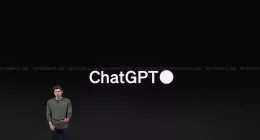As seniors enter their golden years, it’s perfectly understandable for them to want to age in their own homes.
Although the idea of seniors aging in place used to be met with trepidation by caregivers, family members, and doctors, many of the concerns about seniors living at home have been addressed or completely eliminated by the introduction of revolutionary technology.
Traditionally, there have been justifiable concerns for seniors’ safety, mental health, and condition monitoring – not to mention worries about what would happen in the event of a fall or other medical emergency.
Fortunately, new technology has given rise to health and safety devices to make aging in place less precarious for seniors. These six devices aren’t just state-of-the-art; they are saving lives.
1. Medical Alert Systems
The words “I’ve fallen, and I can’t get up!” are so much more than just an iconic catchphrase – these words marked the arrival of a medical safety device that has since helped millions and saved countless lives. Since coming onto the scene in the 1980s, medical alert systems for seniors have become more and more evolved – now, they are faster, more accurate, and have a longer range.
In the earlier days of medical alert systems, they relied on landlines to provide a medical emergency response. Now, the latest medical alert devices use wireless technology, which means their range is no longer limited to the user’s home.
When combined with other medical devices like wearable heart monitors, medical alert devices can provide more vital information to doctors, emergency responders, and caregivers than ever before.
2. Wearable Remote Heart Monitors
A dangerous limitation for healthcare providers and caregivers is that they can be slow to spot quick changes in a patient’s health status – which can cause a delayed response time and delayed treatment if complications arise. That’s why real-time health data is vital.
Wearable sensors have now become available to seniors who need to monitor their heart health. The data is collected by the device and instantly transmitted to a host company, which then makes the information available to the patient’s healthcare providers and caregivers.
These devices can transmit detailed data about cardiac event monitoring (CEM), mobile cardiac telemetry (MTC), heart rate when monitoring for arrhythmias, and Ambulatory Electrocardiogram (ECG).
3. Safety Sensors
Smart sensors are one of the best ways to monitor a senior remotely, which can offer tremendous peace of mind for caregivers and family members. Smart sensors are unobtrusive motion sensors that can be placed almost anywhere in the home, and they work exceptionally well in high-traffic areas and entranceways to frequently visited rooms.
Smart sensors collect information and transmit it to caregivers or family members via a wireless connection. They can even be programmed to detect abnormal behavior and send an alert if a senior’s habits have suddenly changed.
4. Medication Managers
A common side effect of normal aging is memory loss. As a result, many seniors have trouble remembering to take their medications on time – which can be dangerous if they suffer from chronic conditions.
There are several dedicated devices on the market that can remind seniors to take their medication, like smart pill dispensers that send an alert to a caregiver if medication is not taken and voice-activated alarm clocks.
Smart home devices and assistants like Amazon’s Alexa and Astro can also provide reminders, and smartwatches like Lively can also notify family members and caregivers when medication has not been taken.
5. Stovetop Sensors
As the typical effects of aging (such as memory, mobility, focus, and vision or hearing loss) progress, cooking can become a hazardous activity. That’s where stovetop and oven sensors can help.
The Safe-T-Element cooking system is designed to reduce the risk of fires caused by unattended stovetops. This electric stovetop-compatible device is a solid cover plate with a built-in mechanism that will shut the stove plates off if they are left on for an extended period of time.
6. Telephone, Doorbell, and Smoke Notification Systems
When hearing loss progresses, seniors may not know there’s a visitor at the door, or they may miss important phone calls – which is not just frustrating, it’s also dangerous. Missing calls from doctors or not hearing visitors trying to warn of emergencies can have serious consequences.
Although they vary in price, performance, and appearance, there are many visual notification systems on the market today. More technologically advanced visual notification systems can even alert seniors to smoke or carbon monoxide leaks in their homes.



